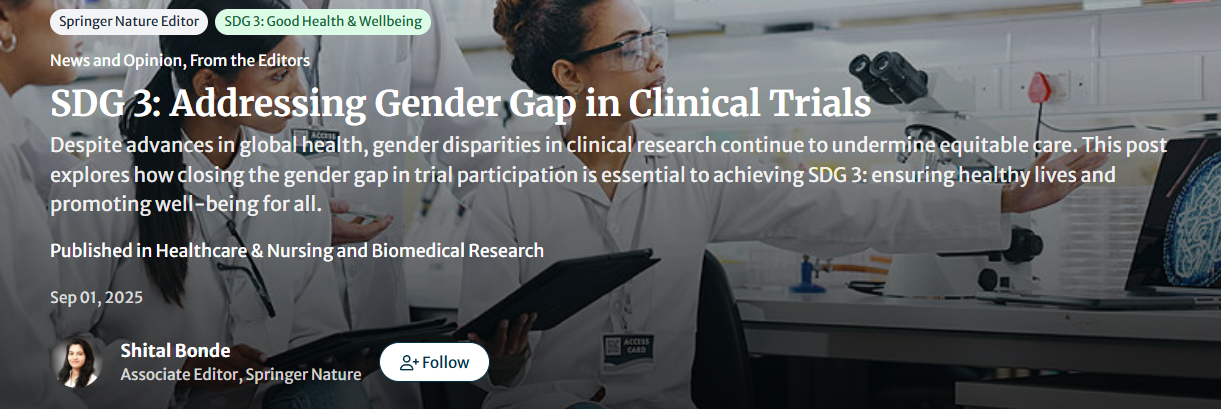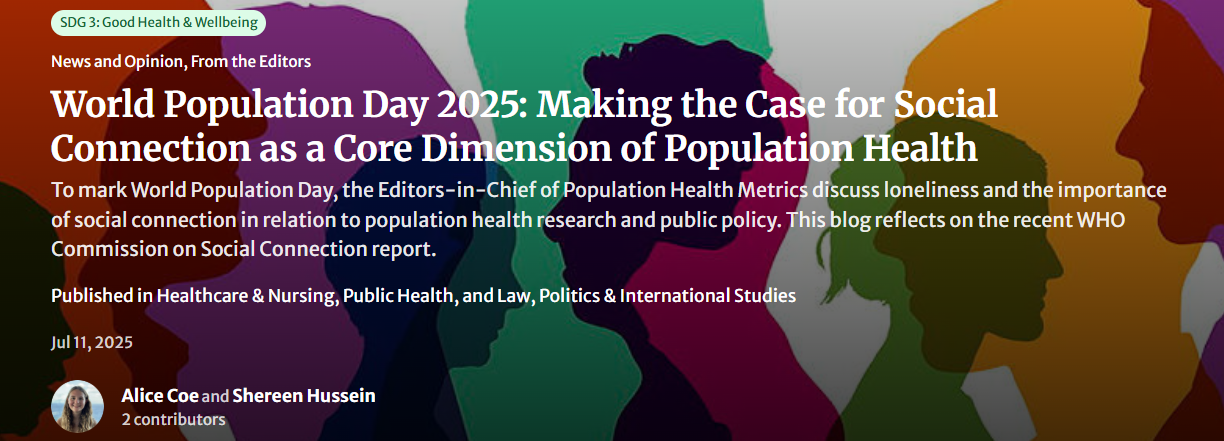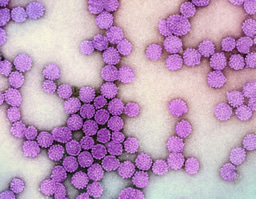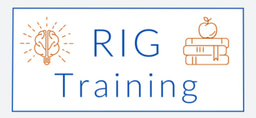Quarterly Highlights from the Medicine and Life Sciences Research Communities
Published in Social Sciences, Cancer, and Cell & Molecular Biology

Welcome to the latest round-up post for the Medicine and Life Science Communities. Over the past three months, researchers and readers have shared an incredible range of insights and ideas across the Communities.
In this round-up, we spotlight some of the posts that captured lots of attention.

Why are women still underrepresented in clinical trials?
Clinical trials drive medical progress, yet women remain significantly underrepresented, accounting for less than 30% of participants in early-phase industry trials. This imbalance stems from historical exclusion, biological differences that affect how drugs work, and ongoing social and financial barriers.
This thought-provoking post from Associate Editor @Shital Bonde explores how outdated assumptions, caregiving responsibilities, and lack of practical support, like childcare or travel compensation, continue to limit women’s participation in clinical trials.
Read the full piece to explore why balanced representation is vital for ethical, accurate, and personalised medicine, and learn about actionable ways to close the gap, such as flexible trial options and partnerships with women’s health groups.

Can water-based exercise help protect your heart?
Cardiovascular diseases (CVDs) remain a leading cause of death worldwide, and regular exercise is one of the best ways to reduce the risk of developing a CVD.
This Behind the Paper post from @Mohammad Mehdi Khaleghi discusses a systematic review of 11 studies exploring how aquatic exercise affects heart health. The results of the study, published in Sport Sciences for Health, were encouraging - swimming and other water workouts improved blood pressure, fitness, body composition, and cholesterol levels, while cold-water swimming showed particular benefits for women. Overall, water-based exercise appears to be a heart-friendly and accessible way to stay active. More research is needed, but the takeaway is simple - your heart may thank you for taking the plunge!
Read the full Behind the Paper post to explore the science behind aquatic exercise and cardiovascular health.

The overlooked power of social connection in population health
Marking World Population Day 2025, Editors-in-Chief @Shereen Hussein and Jonathan Samet (posted on their behalf by @Alice Coe ) of Population Health Metrics spotlight a vital yet neglected aspect of wellbeing: social connection.
This From the Editors post explores how loneliness has become a global public health crisis, affecting one in six people worldwide and contributing to hundreds of thousands of deaths each year, affecting the population as severely as smoking or obesity.
There is a desperate need to advance understanding of how connection (or its absence) shapes health outcomes, and to develop interventions that can rebuild social ties at both community and global scales.
Read the full post to learn why fostering connection is not just good for society, but also essential for our survival.
How squeezing through blood vessels can make cancer cells more dangerous
Following a publication in Nature Communications, @Giulia Silvani and colleagues reveal that tumour cells that are forced through the body’s narrowest blood vessels go under physical stress, which damages and then transforms the cells.
By using a microfluidic ‘blood vessel on a chip’ the team observed that the few cancer cells surviving this squeezing process switched into a more aggressive, stem cell–like state, making them more capable of spreading and forming metastases. The key player is a mechanosensor protein, which detects pressure and triggers cellular changes. Blocking this protein stopped the transformation, while activating it had the same effect as physical squeezing.
Read the full Behind the Paper post to explore how mechanical forces, not just genetic changes, may be contributing to cancer's spread.

Meeting people where they are: the principles and practice of harm reduction
A central tenet of harm reduction is simple but powerful - ‘meet people where they are’. Instead of demanding abstinence or behaviour change, this public health approach focuses on reducing harm and removing barriers to care.
This insightful post by @Louis Gautier explores how stigma, institutional distrust, and one-size-fits-all healthcare models often prevent people who use drugs from accessing the services they need. It highlights evidence-based interventions such as syringe service programmes, supervised consumption sites, and naloxone distribution, each designed to build trust and save lives.
Read the full post to learn how harm reduction is transforming access to healthcare worldwide.

Celebrating World IVF Day: advancing the science of fertility
Each year on 25the of July, World IVF Day honours one of medicine’s greatest achievements- the birth of in vitro fertilisation. It’s both a celebration of scientific progress and a reminder of the ongoing innovation shaping reproductive health today.
This feature, written by @Tamara May highlights editor comments on how interdisciplinary research continues to push the boundaries of fertility science, including hormonal regulation, embryo selection and AI-driven approaches in IVF labs.
The News and Opinion post also showcases special collections exploring topics such as private equity’s role in IVF clinics, egg cryopreservation, and the growing influence of artificial intelligence in reproductive medicine.
Read the full blog to explore how decades of scientific collaboration continue to transform fertility treatment and reproductive healthcare worldwide.
These blogs are just a small snapshot of the research and highlight pieces that caught readers’ attention this quarter. Each story offers fresh insights into science and its impact on our lives. I hope you enjoy exploring these posts as much as I did!
Follow the Topic
-
Nature Communications

An open access, multidisciplinary journal dedicated to publishing high-quality research in all areas of the biological, health, physical, chemical and Earth sciences.
-
Sport Sciences for Health

The journal Sport Sciences for Health publishes reports of experimental and clinical research on the physiology and pathophysiology of physical exercise.
-
Population Health Metrics

Population Health Metrics aims to advance the science of population health assessment, and welcomes papers relating to concepts, methods, ethics, applications, and summary measures of population health.
Your space to connect: The Myeloid cell function and dysfunction Hub
A new Communities’ space to connect, collaborate, and explore research on Clinical Medicine and Cell Biology!
Continue reading announcementRelated Collections
With Collections, you can get published faster and increase your visibility.
Clinical trials 2025
Publishing Model: Open Access
Deadline: Dec 31, 2025
Women's Health
Publishing Model: Hybrid
Deadline: Ongoing





Please sign in or register for FREE
If you are a registered user on Research Communities by Springer Nature, please sign in